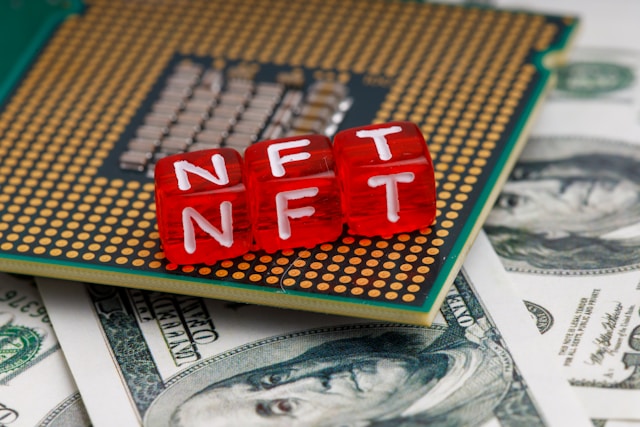
- November 28, 2023
- Personal Finance Advisor
- 0
Understanding tax-deferred pension and retirement savings plans is crucial for anyone planning for their future. These plans are designed to help individuals save for retirement in a tax-efficient manner. Essentially, they allow you to contribute a portion of your income to the plan before taxes are deducted. The money then grows tax-free until it is withdrawn during retirement.
There are several types of tax-deferred retirement plans, including 401(k) plans, 403(b) plans, and Individual Retirement Accounts (IRAs). Each of these plans has its own set of rules and contribution limits, but they all offer the same basic benefit: the ability to save for retirement while reducing your current taxable income.
One of the key advantages of tax-deferred plans is the power of compound interest. Because the money in the plan is not taxed until it is withdrawn, it can grow more quickly than it would in a taxable account. Over time, this can result in a significantly larger retirement nest egg.
However, it’s important to note that withdrawals from these plans during retirement are taxed as ordinary income. Therefore, it’s crucial to consider your expected retirement income and tax bracket when deciding whether a tax-deferred plan is right for you.

Benefits of Tax-Deferred Pension and Retirement Savings Plans
The benefits of tax-deferred pension and retirement savings plans are numerous and can significantly impact your financial stability in your golden years. One of the primary advantages is the potential for tax savings. Contributions made to these plans are typically pre-tax, meaning they reduce your taxable income for the year. This can result in lower income tax payments now.
Moreover, the funds in these plans grow tax-deferred, meaning you won’t pay taxes on the earnings until you withdraw them in retirement. This allows your savings to compound over time, potentially leading to a larger retirement nest egg.
Another benefit is the potential for employer matching contributions. Many employers will match a portion of the employee’s contributions to these plans, effectively providing free money towards your retirement.
Lastly, these plans often offer a variety of investment options, allowing you to diversify your portfolio and potentially increase your returns over time. This flexibility can be a significant advantage for those looking to maximize their retirement savings.
In conclusion, tax-deferred pension and retirement savings plans offer a host of benefits, including tax advantages, employer matching, and investment flexibility, making them a valuable tool for retirement planning.
How to Set Up a Tax-Deferred Pension Plan?
Setting up a tax-deferred pension plan is a crucial step towards securing a comfortable retirement. These plans allow you to contribute a portion of your pre-tax income towards your retirement savings, which then grows tax-free until you withdraw it during retirement.
The first step in setting up a tax-deferred pension plan is to determine your eligibility. Most employers offer 401(k) or 403(b) plans, which are the most common types of tax-deferred retirement plans. If you’re self-employed or a small business owner, you might consider a Simplified Employee Pension (SEP) IRA or a Solo 401(k).
Once you’ve determined your eligibility, you’ll need to decide how much you want to contribute. The IRS sets annual contribution limits, which can change from year to year. It’s generally recommended to contribute as much as you can afford, up to the maximum limit, to take full advantage of the tax benefits and potential growth.
Next, you’ll need to choose your investments. Most plans offer a variety of investment options, including stocks, bonds, and mutual funds. It’s important to choose a mix of investments that aligns with your risk tolerance and retirement goals.
Finally, you’ll need to regularly review and adjust your plan as needed. Your financial situation, goals, and the market can change over time, so it’s important to reassess your plan at least once a year.
Rules and Regulations of Tax-Deferred Retirement Savings Plans
Tax-deferred retirement savings plans are governed by a set of rules and regulations designed to encourage long-term savings for retirement while providing tax benefits. These rules vary depending on the type of plan, but there are some commonalities.
Firstly, contributions to these plans are typically made with pre-tax dollars, reducing your taxable income for the year. However, withdrawals during retirement are taxed as ordinary income. Secondly, there are limits to how much you can contribute to these plans annually. For instance, in 2023, the limit for 401(k) contributions is $19,500, with an additional $6,500 allowed for those aged 50 and above.
Another important rule is the age at which you can start making penalty-free withdrawals, typically 59.5 years. Withdrawals made before this age are subject to a 10% early withdrawal penalty, in addition to regular income tax. However, there are exceptions to this rule in certain circumstances.
Lastly, some plans require minimum distributions starting at age 72, ensuring that the tax-deferred benefits are eventually realized by the IRS. Failure to take these required minimum distributions can result in hefty penalties.
Understanding these rules and regulations is crucial to maximizing the benefits of tax-deferred retirement savings plans and avoiding potential pitfalls.
Expert Advice on Managing Your Retirement Savings Plans
Managing your retirement savings plans can be a complex task, especially when it involves tax-deferred pension plans. These plans offer significant tax advantages, but they also come with specific rules and regulations that must be adhered to.
Firstly, it’s crucial to understand the contribution limits for these plans. Over-contributing can lead to penalties, so it’s essential to stay within the set limits. Secondly, it’s important to consider your investment options within the plan. Diversification is key to managing risk and ensuring a steady growth of your retirement savings.
Moreover, it’s vital to keep an eye on the performance of your investments. Regular reviews can help identify any necessary adjustments to your investment strategy. This could mean rebalancing your portfolio or changing your investment mix based on market conditions and your retirement goals.
Lastly, consider seeking advice from a wealth management expert. They can provide personalized guidance based on your financial situation and retirement goals. They can also help navigate the complexities of tax-deferred plans, ensuring you maximize your savings while staying compliant with the rules.
In conclusion, managing your retirement savings plans requires careful planning and regular monitoring. With expert advice, you can ensure your retirement savings grow steadily, securing a comfortable future.
Comparing Different Types of Retirement Savings Plans
Retirement savings plans are crucial for ensuring financial security in the later stages of life. However, not all plans are created equal, and it’s important to understand the differences between them to make an informed decision.
Traditional 401(k) plans, for instance, allow employees to contribute pre-tax dollars, which can lower their taxable income. The funds then grow tax-deferred until withdrawal. On the other hand, Roth 401(k) plans are funded with after-tax dollars, but withdrawals in retirement are tax-free.
Individual Retirement Accounts (IRAs) also come in two types: Traditional and Roth. Similar to 401(k)s, Traditional IRAs offer tax-deductible contributions and tax-deferred growth, while Roth IRAs offer tax-free growth and withdrawals.
Another option is a pension plan, also known as a defined benefit plan, which provides a set payout upon retirement based on salary and years of service. These plans are less common today but can offer a reliable income stream in retirement.
Each of these plans has its own advantages and disadvantages, and the best choice depends on individual circumstances, including income, tax bracket, and retirement goals. Therefore, it’s crucial to compare these plans and possibly seek professional advice before making a decision.
The Role of Wealth Management in Retirement Planning
Wealth management plays a crucial role in retirement planning. It is a holistic approach to managing one’s finances, which includes investment management, tax planning, estate planning, and retirement planning. The goal of wealth management in retirement planning is to create a comprehensive strategy that ensures a comfortable and secure retirement.
A wealth manager can help you understand the complexities of retirement savings plans, including tax-deferred pension plans. They can guide you on how much to save, where to invest, and how to make the most of your retirement savings. They can also help you navigate the tax implications of these plans, ensuring that you maximize your savings and minimize your tax liabilities.
Moreover, wealth management can help you diversify your retirement portfolio. Diversification is key to managing risk and ensuring a steady income stream during retirement. A wealth manager can help you balance your portfolio between different asset classes, such as stocks, bonds, and real estate, based on your risk tolerance and retirement goals.
In conclusion, wealth management is an essential component of retirement planning. It provides a strategic approach to managing your retirement savings, ensuring that you have a secure and comfortable retirement.
Investment Strategies for Retirement Savings
Investment strategies for retirement savings are crucial for securing a comfortable future. The first step is to understand your risk tolerance and investment goals. This will guide your decision on the types of investments to include in your portfolio. Diversification is key in any investment strategy. By spreading your investments across a variety of asset classes such as stocks, bonds, and mutual funds, you can mitigate risk and potentially increase returns.
It’s also important to consider the time horizon for your investments. If you’re younger, you may be able to tolerate more risk and invest more heavily in stocks, which can offer higher returns but also higher volatility. As you approach retirement, you may want to shift towards more conservative investments like bonds that can provide steady income.
Tax-deferred retirement savings plans, such as 401(k)s or IRAs, offer unique investment opportunities. The money you contribute to these plans grows tax-free until you withdraw it in retirement. This allows your investments to compound over time, potentially leading to significant growth.
Lastly, regular review and adjustment of your investment strategy is essential. As market conditions change, you may need to rebalance your portfolio to maintain your desired asset allocation. Consulting with a wealth management advisor can provide valuable guidance in developing and maintaining your investment strategy.
Navigating Tax Implications of Retirement Savings
Navigating the tax implications of retirement savings can be a complex task, but it is crucial for maximizing your retirement income. Tax-deferred pension and retirement savings plans are designed to encourage long-term savings by offering tax advantages. The money you contribute to these plans is typically pre-tax, meaning it reduces your taxable income for the year you make the contribution.
However, the tax implications come into play when you start withdrawing from these plans during retirement. The withdrawals are treated as ordinary income and are subject to federal income tax. Therefore, it’s essential to strategize your withdrawals to minimize the tax impact.
One strategy is to start withdrawals when you’re in a lower tax bracket, which often happens after retirement. Another is to consider Roth conversions, where you pay taxes upfront but enjoy tax-free withdrawals later.
It’s also important to be aware of the Required Minimum Distributions (RMDs) rules. After reaching a certain age, typically 72, you are required to start taking minimum distributions from your tax-deferred retirement accounts, which are also subject to tax.
Navigating these tax implications can be challenging, but with careful planning and professional advice, you can optimize your retirement savings for a secure future.
Securing Your Future: The Importance of Retirement Savings Plans
Securing your future is a crucial aspect of financial planning, and retirement savings plans play a significant role in this process. These plans are not just about saving money for your post-retirement life, but they are also about ensuring a steady income stream and financial independence when you are no longer earning a regular salary.
The importance of retirement savings plans cannot be overstated. They provide a safety net for unforeseen circumstances such as medical emergencies or unexpected expenses in your golden years. Moreover, they allow you to maintain your lifestyle and cover your daily living costs without relying on others.
Tax-deferred pension and retirement savings plans are particularly beneficial. The money you contribute to these plans is not taxed until you withdraw it, allowing your savings to grow more rapidly. This can significantly increase the amount you have saved by the time you retire.
However, it’s essential to start early and contribute regularly to these plans. The power of compounding works best when you give your money more time to grow. Remember, retirement planning is not a one-time activity but a long-term commitment. With careful planning and disciplined saving, you can secure your future and enjoy your retirement years with peace of mind.




































